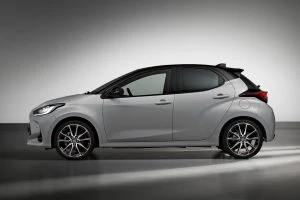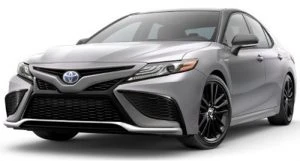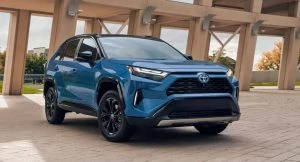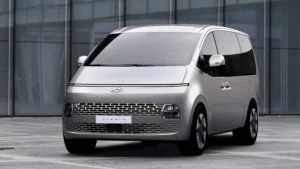New cars
Fuel Prices: New Car?
It’s unfortunate to see that the prices for fuel in Australia have been on the steady increase across. Retailers suggest that the increase in the cost of fuel has come about through record oil prices and new logistical challenges for acquiring the fuel. It’s definitely worth shopping around to ensure that you can get the best price on your fuel at the pump, as prices do differ from retail outlet around town and across States.
Just recently, regular unleaded petrol (91) had a national average of $2.14 per litre, yet the cheapest was found in Carnarvon, Western Australia, where it was sold for $1.59 per litre. The most expensive was located in Derby, Western Australia, where (91) was seen being sold for $2.42 per litre. The same trend is occuring for (95), (98), (E10), and Diesel.
As for how long these high fuel prices will continue to last, fuel industry analysts say that it’s anyone’s speculation at the moment. Peter Khoury, NRMA spokesman, recently said: “These prices are completely off the scale, more than twice what [motorists] were paying in April 2020… We have no idea where we would set the ceiling at this point.”
It begs the question: Should a motorist that has to do quite a few kilometres each week look at purchasing a more fuel efficient car? The answer, I guess, is up to you. It depends on how tight your budget is. If you can afford a new car, or at least a second car that’s extra-miserly on fuel, then I’d say go for it – particularly if you’re having to do high mileages. Then again, if you are not travelling far each week, say to the shops and the occasional trip elsewhere, then staying with the car you have and keeping your travel to a minimum is probably the way to go at this stage, and we’ll sit tight and see where/when all this price rising will come to an end, revising it again in another few months.
You might be a motorist who needs to upgrade for various reasons including the rising fuel costs. In this case, being in the market for a new car and wanting to purchase a vehicle that delivers the best fuel-efficiency has to be a pivotal point of purchase for you. Here is a list of the most fuel-efficient vehicles in 2022 across numerous categories, something that you might find useful right now.
Note – Where “Diesel” hasn’t been mentioned after the model, assume that it’s “Petrol” version…
Small cars (Hatchbacks):
Toyota Yaris Hybrid Hatchback 3.3 litres/100 km

Toyota Yaris Hybrid Hatchback
Toyota Corolla Hybrid Hatchback 4.2 litres/100 km
Toyota Yaris Hatchback 4.9 litres/100 km
Mazda 2 Hatchback 5.3 litres/100 km
Toyota Corolla Hatchback 6.0 litres/100 km
Mazda 3 Hatchback 6.2 litres/100 km
MG3 Hatchback 6.7 litres/100 km
Hyundai i30 Hatchback 7.4 litres/100 km
Family & fleet (Sedans):
Toyota Camry Hybrid Sedan 4.7 litres/100 km

Toyota Camry Hybrid Sedan
Toyota Camry Sedan 6.8 litres/100 km
Small-Med SUV
Toyota RAV4 Hybrid 2WD 4.7 litres/100 km

Toyota RAV4 Hybrid
Toyota RAV4 Hybrid AWD 4.8 litres/100 km
Mazda CX-3 2WD 6.3 litres/100 km
Mazda CX-30 2WD 6.5 litres/100 km
Toyota RAV4 2WD 6.5 litres/100 km
Mazda CX-5 2WD 6.9 litres/100 km
Toyota RAV4 AWD 7.3 litres/100 km
Mazda CX-5 AWD 7.4 litres/100 km
Mitsubishi Outlander 2WD 7.5 litres/100 km
Mitsubishi Outlander AWD 8.1 litres/100 km
Large SUV
Toyota Kluger Hybrid AWD 4.7 litres/100 km

Toyota Kluger Hybrid AWD
Hyundai Santa Fe AWD Diesel 6.1 litres/100 km
Kia Sorento AWD Diesel 6.1 litres/100 km
Toyota Prado 4WD Diesel 7.9 litres/100 km
Mazda CX-9 2WD 8.4 litres/100 km
Toyota Kluger 2WD 8.7 litres/100 km
Toyota Kluger AWD 8.9 litres/100 km
Toyota LandCruiser 300 Diesel 8.9 litres/100 km
Mazda CX-9 AWD 9 litres/100 km
Kia Sorento 2WD 9.7 litres/100 km
Hyundai Santa Fe 2WD 10.5 litres/100 km
Nissan Patrol Y62 14.4 litres/100 km
Ute
Nissan Navara STX 4WD Diesel 7.8 litres/100 km

Nissan Navara STX 4WD Diesel
Toyota HiLux SR5 4WD Diesel 8 litres/100 km
Ford Ranger XLT 4WD Diesel 8 litres/100 km
Isuzu D-Max XT 4WD Diesel 8 litres/100 km
Mazda BT-50 SP 4WD Diesel 8 litres/100 km
Mitsubishi Triton GLX+ 4WD Diesel 8.6 litres/100 km
Ford Ranger XLT 4WD Diesel 8.9 litres/100 km
LDV T60 Max 4WD 2.0L Diesel 9.2 litres/100 km
GWM Ute 4WD 2.0L Diesel 9.4 litres/100 km
Toyota HiLux Workmate 2WD 10.9 litres/100 km
Ram 1500 DS Limited 12.2 litres/100 km
Ram 1500 DT Express 12.2 litres/100 km
Chevrolet 1500 LTZ 12.8 litres/100 km
Van
Hyundai Staria Load van Diesel 7 litres/100 km

Hyundai Staria Load van Diesel
Ford Transit Custom van Diesel 7.3 litres/100 km
Toyota Hiace LWB van Diesel 8.2 litres/100 km
LDV G10 van Diesel 8.2 litres/100 km
LDV G10 van 11.1 litres/100 km
Toyota’s Hybrid vehicles, if they suit you needs, top their classes with fuel bills that were roughly half their nearest rivals. The Hybrid versions of the Toyota Yaris Hatch, the Toyota Corolla Hatch, the Toyota Camry Sedan, the Toyota RAV4 SUV, and the Toyota Kluger are the ones I’m talking about here.
Hydrogen V8 ICE

Exciting news for internal combustion engine (ICE) lovers: Toyota, Mazda, Subaru and Kawasaki are wanting to collaborate on the attempt to keep the combustion engine alive while meeting all the global clean air targets. Not only that, but Toyota and long-time Japanese engineering partner Yamaha are at work developing a special new hydrogen-powered 5.0-litre V8 engine. Unlike a hydrogen fuel-cell car, which combines hydrogen and oxygen atoms to create electricity to drive a motor, this new hydrogen V8 internal combustion engine is a conventional piston-driven engine that has been tuned to burn hydrogen instead of petrol.
While this newly developed V8 engine isn’t completely new, the way it’s fuelled is. It’s a 5.0-litre naturally aspirated V8 that is based off the engine that has been used in the Lexus RC F coupe. Yamaha says that it produces around 335 kW of power at 6800 rpm and 540 Nm of torque at 3600 rpm. Having modified the injectors, the head, the intake manifolds and other engine components, this work has added up to make the engine environmentally friendly. The hydrogen-fed ICE has become less powerful than the petrol-fed V8 that the hydrogen engine is based on. In the Lexus RC F coupe, the petrol V8 puts out 472 kW and 536 Nm of torque, so while torque has increased a little, power has dropped considerably. That said, 331 kW is still a stonking amount of power to enjoy, and more often than not it is the torque that you really want in the real world conditions. You also still get the sound of a burbling V8, and what’s not to like about that!
Yamaha engineer, Takeshi Yamada, said that the engine has a different character to a conventional petrol motor. He stated that hydrogen engines provide a friendlier feel, making them easier to use even without having utilize other electronic aids for the drive.
Toyota is clearly committed to the project of providing ICE powerplants that use hydrogen as the fuel. Given that Toyota has run a hydrogen-powered Toyota Corolla in Japan’s Super Taikyu race series as well as showcasing a hydrogen-powered Toyota Yaris GR prototype with the same hydrogen engine technology, it is obvious that they want to continue with this new breed of ICE.
One of the beauties about burning hydrogen instead of petrol is that the hydrogen powerplant does not produce carbon dioxide, which is considered to be one of the primary contributors to global warming. There would also be no significant nitrogen oxides emissions from an ICE designed to burn hydrogen, thanks to the selective catalytic reduction technology used in the aftertreatment of the combustion gases.
“Hydrogen engines house the potential to be carbon-neutral while keeping our passion for the internal combustion engine alive at the same time,” Yamaha Motor president Yoshihiro Hidaka said. He also added that: “I started to see that engines using only hydrogen for fuel actually had very fun, easy-to-use performance characteristics”.
While hydrogen is plentiful in the universe, it must be separated from other compounds to be used as fuel. Up to the year 2020, most hydrogen was produced from fossil fuels, resulting in CO2 emissions. Hydrogen obtained from fossil fuels is often referred to as grey hydrogen, when emissions are released into the atmosphere. Blue hydrogen is the hydrogen produced from fossil fuels when emissions are captured through carbon capture and storage (CCS).
Hydrogen that is produced from fossil fuels using the newer non-polluting technology called methane pyrolysis is often called turquoise hydrogen.
You can also generate hydrogen from renewable energy sources, and this hydrogen is often referred to as green hydrogen. There are two practical ways of producing green hydrogen. One of the ways is to use electric power for producing hydrogen from the electrolysis of water. The other way of producing green hydrogen is to use landfill gas to produce the green hydrogen in a steam reformer. Hydrogen fuel, when it is produced by using renewable sources of energy like wind or solar power, is a renewable fuel.
Hydrogen can also be created from another renewable energy source called nuclear energy via electrolysis, and this is sometimes seen as a subset of green hydrogen, but it can also be referred to as being pink hydrogen.
Obviously, when a car can be designed to run on hydrogen that has been produced from renewable energy sources, then this is a good thing. Toyota and Yamaha remain adamant that this is great technology which could carve out a niche for itself in the new EV automotive landscape.
Toyota has also recently revealed a fleet of 12 zero tailpipe-emission concept vehicles, many of which will reach production in the coming years.
This is all good news stuff, especially for those of us who love the sound of an ICE instead of a silent EV. The noisy farts always get the best round of laughter!
A to J of Surfing Vehicles Dude
“Surfs up!”
“Dude, how am I gonna get there?”
“Bro, you need a car!”

Summer is here, and surfing is a great lifestyle for getting out, chasing the waves, and getting some immunity-boosting Vitamin D. In fact, any sort of outdoor adventure and exercise will see you a fitter and healthier person for getting out there and doing it. What 2022 cars make for an ideal surfer’s companion? The following are several useful vehicles that, if you’re wanting something to get you places, will transport you, a friend or two, some gear, and surfboards/mountain bikes through something more than just a little puddle, mud or soft sand.
Dedicated vans or MPVs with AWD like the Volkswagen Multivan, LDV G10, Mercedes-Benz V-Class, Kia Carnival, Mercedes-Benz Valente, Volkswagen Caravelle, Honda Odyssey, Hyundai STARIA, Volkswagen California, Toyota Granvia, Mercedes-Benz Marco Polo ACTIVITY, and the Volkswagen Caddy are potentially great for surfing travels with one, two or more mates. Some, but not all, will offer AWD. Depending on how far down onto the beach you want to get your MPV or Van, AWD is definitely the way to go for getting through soft sand and out of sticky situations.
For years, wagons and SUVs have also been a go-to machine for the surfer; for good reason too as they offer plenty of space, the capacity for lugging gear, and for sleeping. But having a vehicle that can get you across country and down onto the beach makes for the ultimate surfer’s vehicle. Outside of the list of vans and MPVs above, there are some great vehicles still worth a look if you’re into doing a bit of surfing, fishing or any type of outdoor adventure.
Here is the best of them, first article of three, from A (Alfa Romeo) to J (Jeep). Let us know if we’ve missed anything in between!
Alfa Romeo Stelvio

Three petrol engines offer the Stelvio between 147–375 kW of power and 330–600 Nm of torque. The 8-speed automatic and 4×4 (AWD) ability make it ideal for heading off tar seal. It has 5-doors, 5-seats, a 5-star ANCAP safety rating, and 1600 litres of boot space when the rear seats are folded flat.
Audi Q Wagons


Audi Q5 and Q7 models are idyllic; the Q3 maybe a little small, however. All of these are stylish, AWD and superbly comfortable. Diesel and petrol engines are available that offer the Q5 and Q7 between 150–251 kW of power and 370–700 Nm of torque. 4×4 (AWD) ability make them perfect for nosing about off-road. Both Q models have 5-doors, 5-seats, and a 5-star ANCAP safety rating. The Q5 has 1530 litres of boot space with the rear seats folded flat; Q7 has 1971 litres.
Audi A6 Allroad

Cargo room extends to 1680 litres with the rear seats folded down, and the AWD Quattro system ensures that you’ll get around secondary roads and the odd track pretty comfortably in an A6 Allroad. A nice wagon to drive, and the surfboard can go on the roof or slide in along the flat cargo area. A sportier drive than a similarly capable Subaru Outback. The Audi A6 Allroad Wagon 45TDI is offered in Australia and runs with a tiptronic 8-speed quattro drive. The 3.0-litre Turbo-Diesel is a peach, packing a healthy 183 kW/600 Nm from its V6 configuration, and scampers from a standstill to 100 km/h in less than 7 seconds.
BMW X3, X5


BMW X3 and X5 models are really nice SUV wagons for open road touring. All are stylish, AWD, and superbly comfortable. Diesel, electric and petrol engines are available for the X3 that offers between 135–285 kW of power and 300–620 Nm of torque. X5 models get between 170 and 460 kW of power and 450–750 Nm of torque. 4×4 (AWD) ability make them handy when getting down to the beach or picnic area. All X models have 5-doors, 5-seats, a 5-star ANCAP safety rating, and the X3 has 1600 litres of boot space with the rear seats folded flat; X5 has 2047 litres.
Ford Everest

The Ford Everest is magnificent. Its 3.2 Diesel Turbo engine delivers 157 kW and 500 Nm. The 10-speed automatic and serious 4×4 capability ensure you won’t easily get stuck in this one. Smooth, loads of road presence, and comfortable, there isn’t many negatives. 1796 litres of boot space is available with the seats folded down. It has 5-doors, 5-seats, and a 5-star ANCAP safety rating.
Haval H9

The big Haval H9 SUV Wagon gets a standard adaptive six-mode 4×4 terrain control system and a 700 mm wading depth. The 180 kW/350 Nm turbo-four petrol/eight-speed auto is smooth and impresses. A massive boot space combined with excellent features and a relaxing drive makes it a great surfing/adventure vehicle. It’s also keenly priced.
Hyundai Santa Fe

Hyundai’s 7-seat Santa Fe SUV is large. With a choice between a 206 kW/336 Nm 3.5-litre V6 petrol or a 147 kW/440 Nm 2.2-litre turbo-diesel four, the Santa Fe range is a great driving machine and is available in AWD. Comfortable, and particularly well set-up in diesel guise, the Santa Fe is a warm travelling companion. Boot space: 2042 litres.
Isuzu MU-X

A 7-seater with five doors and a rugged 3.0 Turbo-diesel motor is hard to overlook. Stylish and tough, Isuzu’s new MU-X seven-seat off-roader comes in three spec levels (LS-M, LS-U and range-topping LS-T), each with the option of RWD or 4WD and standard with a six-speed automatic transmission. 140 kW and 450 Nm of torque match with a 3.5 tonne towing capacity. ANCAP five-star safety and a boot space of 2138 litres makes the MU-X a perfect surfer’s wagon.
Jeep Wrangler

The LWB Jeep Wranglers are stunning lookers. Perfect in every way but only let down by a rather mediocre safety rating 3 out of 5 stars. 2050 litres of boot space and 4×4 tenacity.
Jeep Grand Cherokee

An awesome, comfortable surfer’s wagon, the Jeep Grand Cherokee comes with a choice of a 3.6-litre petrol 8-speed automatic 4×4, or a 3.0-litre turbo-diesel 8 speed automatic 4×4. True off-road potential and loads of space with up to 2005 litres of cargo space. Offering between 184–522 kW (Yes, 522!) of power and 347–868 Nm of torque this packs a punch. Superior 4×4 (AWD) ability make these ideal, and they are seriously comfortable. All are 5-star safe.
Another Manufacturer Bites the Dust
Australia has seen a few high-profile names depart from the local car market over recent years, and sadly, another name has joined the fold. After a long and admired time down under, Chrysler has followed the lead of Holden, pulling up stumps. It comes as the brand’s US parent company makes a decisive move to exit right-hand-drive production.
Chrysler’s time in Australia
The company first began producing vehicles in Australia back in 1951, which seems like an eternity ago in this day and age. At one stage, in the 1970s, buoyed by the popularity of the Valiant, Chrysler managed to rise to third on the charts among local manufacturers, producing upwards of 50,000 vehicles a year, and only trailing the two mainstays in Holden and Ford at the time.
Although the brand has seen sales dwindling for some time now, Chrysler was one of the few V8 sedan options sold in Australia over recent years. When Ford and Holden both put an end to their V8 plans, Chrysler was the sole remaining affordable V8 on the market. That means the final of its two-dozen Chrysler 300 sedans will not be replaced, and are the last options for new car buyers eyeing a new and affordable V8 in Australia.
Some observers may be wondering if the Chrysler 300 was even for sale after being withdrawn from Australian showrooms at the start of this year. However, new car buyers have been able to buy the car on special order, even though supply constraints have hampered the process – a force felt by a number of other dealers as well.

What does the decision mean looking forward?
While Chrysler hinted the decision may be short-term, as it moves to ramp up its capacity and capabilities to develop electric vehicles, it is highly unlikely there would be a resurgence for right-hand drive vehicles across the company. After all, its home market has long been the US.
In the meantime, other brands tied to Chrysler’s parent company remain unaffected. The likes of Fiat, Alfa Romeo and Jeep have not announced any plans to wind-back production of right-hand drive vehicles. Whether that decision stands the test of time remains to be seen, but the likes of Fiat would certainly be vulnerable given low-volume sales across the nation.
For existing owners, fortunately Chrysler will continue to support repairs and service into the foreseeable future. And with that, Chrysler sadly goes out with a whimper, managing less than 2000 sales across the last five years in Australia. Nonetheless, the brand will be an icon to remember for many who bought their first car some 50 years ago.